 |
| Sampler from Charoli foods |
#FoodocracyKitchens is a series where I bring to you food stories and memories of people belonging to different communities and parts of India who reside in Mumbai now. In this instalment, you will get a rather unique taste of Indore and that of Bhopal from the modern state of Madhya Pradesh.
One of the most outstanding home chef cooked dishes that we have had during the lockdown, and there have been many(!), is the sabz murg from Anuradha Joshi Medhora’s Charoli Foods.
The chicken was cooked in a delectable coconut milk gravy which pulled at ones heartstrings. It had well cooked green chillies in it which added a bit of residual heat to cut the creaminess of the coconut milk. There were shaved almonds that added textural contrast. The chicken pieces were juicy. The breast pieces too!
 |
| Sabz murg |
Anuradha hails from Indore and as my friend, chef and TV show researcher, Amar Gutta pointed out, coconut milk gravies are not common in Indore or in the state of Madhya Pradesh for that matter. “Can you find out more,” Amar asked me.
Anuradha agreed with Amar when I asked her about this.
She said that her recipes do come from her home in Indore. From what she has seen her mother, father grandmother, grandfather, uncle and aunts cook. Turns out that everyone in her family loves to cook! Listening to her stories you would feel that she lived in a fairy tale kitchen where everyone was smiling and cooking and feeding.
Yet, there is a twist to her story and that explains the existence of this curry as you will soon see.
Anuradha left home at the age of 13. Her early schooling happened in boarding schools across the country with a final stint in Pune. Anuradha moved into Mumbai in 2003 to complete her studies and then stayed on here. She would come home during vacations and head straight to the kitchen to see her favourite dishes being cooked by her mum and wait patiently for them to get ready. “Boarding school food sucked!!!!” She would make her playlist of dishes and give it to her mum even before she headed back home, just as I would tell my mother, “only chicken and no fish but for the fish head dal. Hakka noodles, pulao and alu posto too,” before I would head home to Kolkata on vacations after I had just moved to Mumbai.
Both her grandfathers had travelled abroad early in their lives because of further studies and work. Her paternal grandfather was in the Royal Navy and that took him overseas. Her maternal grandfather went to New York for his studies to become a handwriting and arms expert. Though Brahmins and from vegetarian families, this exposure led to both her grandfathers being introduced to the world of meats, fell in love with it and introduced it in their kitchen when they came back home. Their work and social circles got them to interact with the royal families of Malwa (the western part of modern state of Madhya Pradesh) and that is how recipes from the royal kitchens entered the kitchens of this Maharashtrian family settled in Indore.
“The name Malwa comes from MALAV which literally means – a part of the abode of Lakshmi. A region invaded by the Muslims, controlled by the Rajputs and ruled by the Marathas. Dewas, Jaora, Ratlam, Sitamau and Sailana, a large part of Gwalior, parts of Indore and Tonk and about 35 small estates and holdings all contributed to Malwa’s culinary heritage,” explained Anuradha who is visibly passionate about the history of the region.
This is the food that Anuradha tries to present in her menus in Charoli Foods (named after her mum’s favourite ingredient). The food that she first began cooking when she had got her own kitchen for the first time when in Pune in college followed by Mumbai. She begin to cook because she missed home and would call up her mom for recipes and was soon hooked to the kitchen herself, following in the best traditions of her family.
“This is not typical Indori food,” asserts Anuradha. “Meat plays a big role in our home for example, while many in Indore are vegetarians.”
Anuradha said that the presence of two large Maratha states, the Holkars and the Scindias, brought in a Maharashtrian influence in the food of the royals of Malwa in terms of the use of coconut, kala masala, tamarind and kokum. This explains the mystery of the coconut milk in the sabz murg!
Another standout dish from what we got to try from Anuradha’s repertoire was the taaze masala ka maas which consisted of very tender mutton, cooked in a liberal amount of ghee, with a flavour punch coming in from the use of fresh coriander and green chillies. Anuradha ascribed this dish to the royal kitchens of Bhopal and the Mughlai tradition that had flowered there.
There were veneers added to the cuisine of the royals of Malwa thanks to inter-royal family marriages. There apparently is an influence of Nepali food in the royal kitchens of Gwalior and Jhabua as the Rajmata (queen) had come from Nepal. The courts of Indore had a Goan head cook who would make European food for Maharani Sharmishtha Bai Holkar and this had an impact on the royal menu! Then there is Bhopal, where the royal kitchens had a fair bit of Mughal and Shirazi influence and Rajput too because of the many Rajput ‘thikanas’ there.
Stories which Anuradha loves to tell if you ask her. Not moot to the story but I discovered that her dogs and our cats share the same vet.
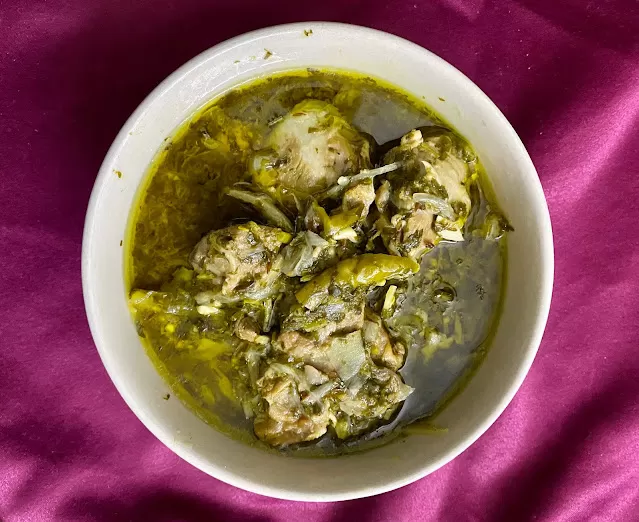 |
| Taze masale ka maas |
Anuradha started her working career in Mumbai first in advertising. Then she and her mum started a textile business and that is when she started doing pop ups to showcase her food after encouraged by her husband (a Parsi from Kolkata) to do so. The next step was when she ran a retail counter at the Flea Baazar Cafe in Mumbai. Running a retail counter offered a completely different experience from doing pop ups and was packed with lots of learnings for her, says Anuradha.
Then came the lockdown and all of his came to a halt. That is when Anuradha decided to venture into home catering and her food has apparently been sold out every weekend. She ascribes this chapter of Charoli Foods, and the earlier one at Flea Bazaar Cafe too, to Riyaaz Amlani of the Impresario Group.. She has unofficially ‘appointed’ him as her mentor and uses him for both guidance and as a sounding board and she feels indebted to him for this. Anuradha says that her varied experiences as an ad agency professional, a business owner and then in working with chef Gresham Fernandes and the team at Flea Bazaar Cafe have all come of use in her latest avatar as a home chef.
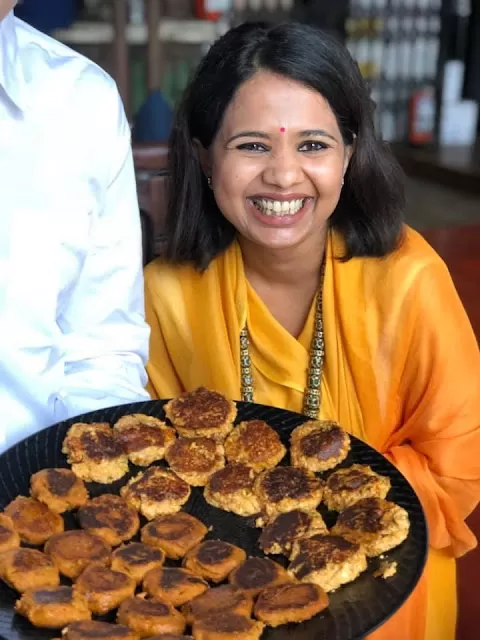 |
| Anuradha Joshi Medhora |
I could tell you about the other dishes that she had sent such as the flavoursome lal mirch and namak ke tukdi parathas, the maas ke zarda pulav (3 parts savoury and 1 part sweet rice) and mutton halwa, a slow cooked sweet meat dish which is consumed as an immunity booster in winter it seems, but what I want to tell you is about something else. The question that came to my mind after I had her food and the discussion that followed.
Is there any one such thing as the food of Madhya Pradesh, the state to which Anuradha’s home town of Indore belongs? If so, what defines it?
I had been to Indore for a day trip in the early 2000s and did not really experience the food there but for a quick visit to Chhapan Bazar which seemed to offer the same street food dishes that Mumbai is famous for. I had planned a trip to Bhopal a few winters back but that did not work out. There were a couple of folks from Indore and Bhopal in my PG but I do not really know much about their cities or their food. Did not bother to ask back then. This could be the opportunity to find out more.
When I put my question to Anuradha, she said there is possibly no single strain that could be defined as ‘the food of MP.’ The food of each city in the state reflects the diverse culture of its residents. Of those who came to trade there, its rulers and and even the topology.
“Indore is vegetarian, Bhopal has a Muslim influence, then there is tribal food which is very unique,” said Anuradha to illustrate the difficulty of the task.
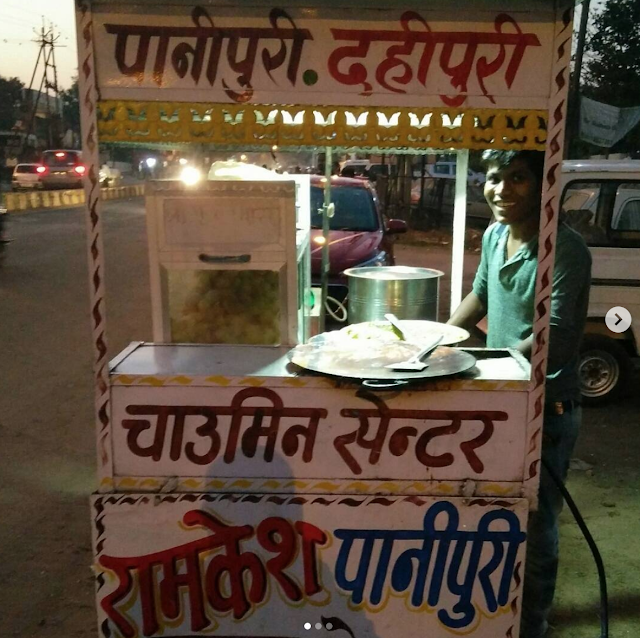 |
| Pic Credit: Fritz Gonzalves |
To know more, I reached out to Fritz Gonzalves, a food lover from Bhopal, who moved to Mumbai 2005 to study in XIC. He started his career in advertising after that and currently works with Ogilvy Advertising. He talks about his food discoveries on his Instagram page, @eatwithfritz. I thought that I would speak to him get a sense of the food of Bhopal, if not MP.
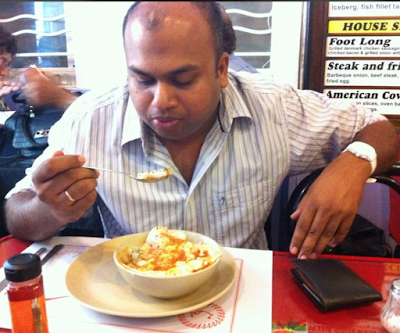 |
| Fritz Gonsalves. At Churchil, Mumbai. Dreaming of kachori bana kar |
“There is nothing distinctly ‘Bhopali’ about the food prepared in Bhopal,” said Fritz.
What makes the food of Bhopal special, according to Fritz and what he misses the most, is its diversity.
“From hardcore vegetarian dishes to mouthwatering Mughlai (non veg) ones. From chhole chaat stalls to paya soup counters. From Gupta ji’s burgers to Salim’s kebab corner. From desi ghee khichadi to roadside haleem. The distance your tastebud travels can only be measured in food light years,” concluded Fritz, using his copywriting skills to sing paeans in memory of the food of his city of birth.
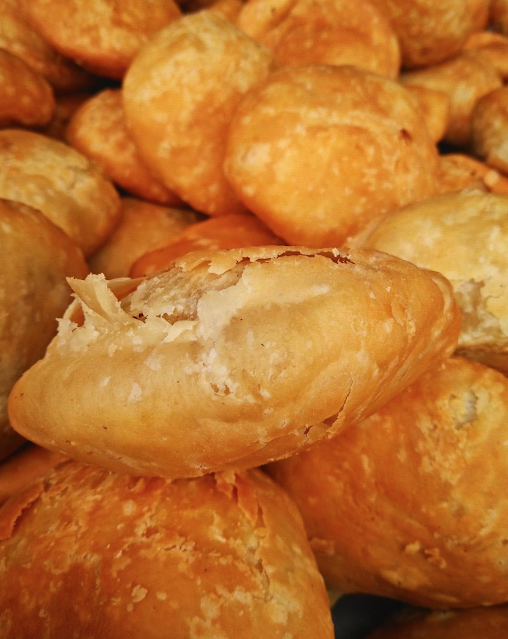 |
| Kachori. Pic credit: Fritz Gonzalves |
The first thing that Fritz tries to eat when he goes back to Bhopal are the dal kachoris at either Gwalior chaat bhandar or Vijay Chaat Bhandar, where he asks for, ‘one kachori bana kar.’
“A khasta kachori mixed with a thick and tangy tamarind chutney, spicy green chutney, a dash of flavoured yoghurt and topped with clove (laung) infused sev,” said Fritz, “I have had kachoris across north India, but this stuff is legendary.”
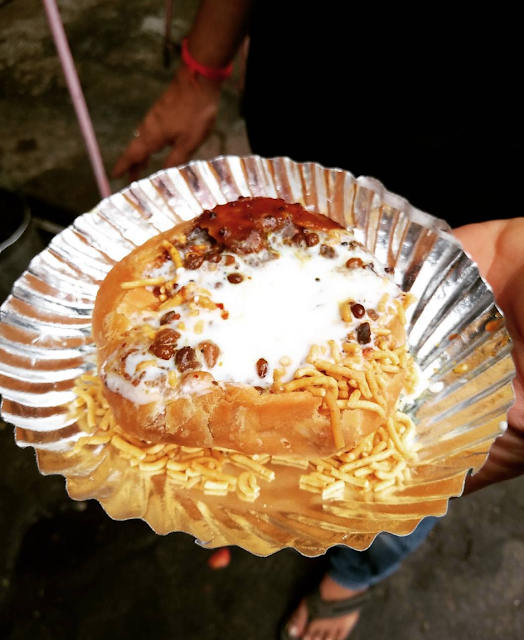 |
| Kachori bana kar. Pic Credit: Fritz Gonzalves |
When he misses the home he left behind in Bhopal, Fritz goes to his kitchen in Mumbai and adds fennel seeds to poha, in memory of the legendary pohe jalebi chai breakfasts of the state, and breaks into a smile as he sits to relish it.
“Adding fennel (saunf) seeds along with jeera (cumin) is something I have seen only in Bhopal and I proudly continue this tradition in my kitchen in Mumbai.”
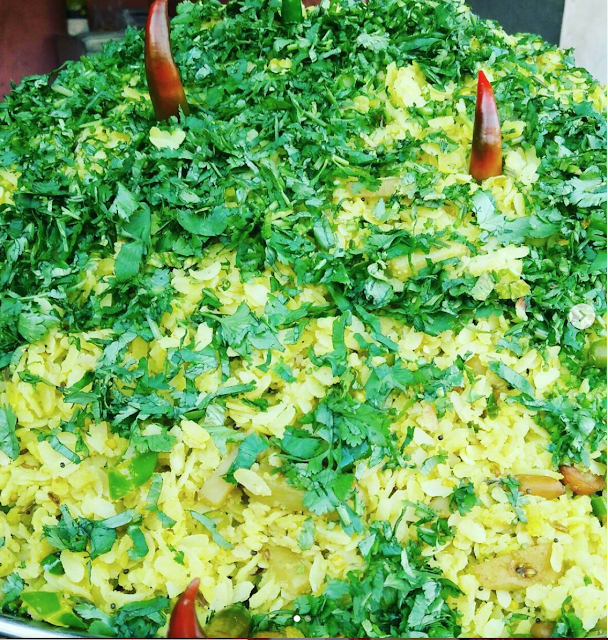 |
| Poha. Pic credit: Fritz Gonzalves |
When I spoke to Anuradha, who is originally from Indore, and then to Fritz, who is originally from Bhopal, for #foodocracykitchens, I thought that I would come up with a definition of the food of Madhya Pradesh which I could share with you.
I failed and possibly not for the lack of trying. The food of the state is too steeped in in its history and diversity it seems, for one to be able to box it.
The only conclusion that I could reach at the end, is that I have to plan many trips to India’s central state to get a feel of the culinary wonders on offer.
That is as good a lockdown pipe-dream as any!
This is where you can hear Anuradha Joshi Medhora talk about her food love story on #FoodocracyForHer

